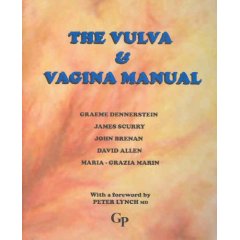This is a new book on the integrated management of vulvovaginal disease.
The authors come from a variety of backgrounds
- gynaecology, dermatology, pathology and psychology
- and describe a multidisciplinary approach to these conditions.
The book has the most complete classification of vulvovaginal disease published, based on the etiology of 275
conditions; coverage includes benign, malignant, and functional (including psychosexual) diseases. Each disease has a
descriptive summary, pathological features, and treatment guidelines.
The book is illustrated in full color throughout.
A new, full color book on the integrated management of vulvovaginal disease, The Vulva and Vagina Manual presents the
most complete published classification of vulvovaginal disease, based on the etiology of 275 conditions.
Covering the management of benign, malignant, and functional diseases, including those of a psychosexual nature, each
disease featured has a descriptive summary, pathological features, and treatment guidelines, thus ensuring that the
book is easy to use and follow.
Written by authors from a variety of backgrounds - gynecology, dermatology, pathology and psychology ?and backed by the
International Society for the Study of Vulvovaginal Disease, this multidisciplinary work is undoubtedly an important
resource for gynecologists, dermatologists, obstetricians, midwives, genitourinary physicians, STD physicians and all
those treating vulvovaginal disease.
Contents:
Introduction
Chapter 1: Gynecologist's Perspective
Clinical Assessment of lower female genital tract complaints
Office pathology
Chapter 2: Dermatologist's Perspective
Epidermis, dermis and basement membrane zone
Clinical features
Treatment of vulvar dermatoses
Chapter 3: Oncologist's Perspective
Benign and premalignant conditions
Malignant conditions
Chapter 4: Psychologist's Perspective
Multifactorial nature of chronic vulvar disease
Human behaviour and chronic vulvar disease
Management of patients with chronic vulvar disease
Chapter 5: Pathologist's Perspective
Clinical aspects relevant to the pathologist
Pathologist's report
Communication
Classification
Chapter 6: The Basics
Embryology
Anatomy
Histology
Ecology
Tables of Modes of Clinical Presentation
Chapter 7: Normal variations
Vulva
Vagina
Chapter 8: Developmental Abnormalities
Malformations that do not lead to sexual ambiguity
Malformations with ambiguous sexual organs
Chapter 9: Infections
Parasites
Fungi
Bacteria
Viruses
Chapter 10: Non-infectious Dermatoses
Spongiotic
Psoriasiform
Lichenoid
Vesicobullous
Granulomatous
Vasculopathic
Others
Chapter 11: Endocrine and Metabolic Disorders and Disorders of Pigmentation
Chapter 12: Trauma
Chapter 13: Neoplasms
Vulva - epithelial
Vulva - melanocytic
Vulva - mesenchymal
Vulva - hemopoietic and lymphoid
Vulva - secondary tumours
Vagina
Urethra
Chapter 14: Non-neoplastic Cysts and Swellings
Chapter 15: Functional Disorders
Disorders of sensation
Sexual disorders
Classification of Vulvovaginal Disease
Author Biography:
Graeme Dennerstein RFD, MBBS, FRCOG, FRANZCOG, is a Melbourne-based, currently
practicing obstetrician and gynecologist. He was the Head of the
Dermogynaecology Clinic at the Mercy Hospital for Women in East Melbourne.
James Scurry MD, FRCPA, is an anatomical pathologist. He developed a research
interest in vulvovaginal disorders while reporting for 10 years for the
Dermogynaecology CLinic, Mercy Hospital for Women, Melbourne.
John Brenan MBBS[Hons], FRCAP, FACD, is a currently practicing consultant
dermatologst. He was President of the Australasian College of Dermatologists
and a life member of the American Academy of Dermatology, a member of the
European Academy of Dermatology


